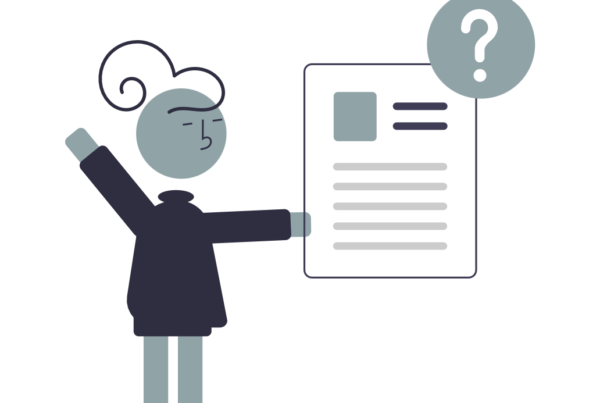Introduction
I didn’t realize how much I used it until I lost it. 😞 Neither my wife nor I had slept in almost a week. Our newborn daughter had just arrived the previous week, and we were doing our best to adjust to the new normal. 👶 My wife would say something or ask me something that I wouldn’t fully understand, and I didn’t have the energy or willpower to try to. Tension was building between us, and we grew less and less able to communicate effectively. With only one bloodshot eye halfway open, it struck me that I had lost my ability to clarify effectively, and it was taking a severe toll on our ability to stay on the same page. 😩
One aspect of communication that is arguably the most important element of corporate training is the ability to clarify. Clarification skills are the cornerstone of keeping a conversation alive. If you’re doing it right, your training course is just a structured conversation you’re facilitating. A conversation is easy to start in the classroom. All you need to do is ask the pre-written question in your facilitator guide, and you’re off and running. The tricky part is keeping that conversation moving in a productive direction. 💬💬
How do you leverage clarification techniques to keep the conversation going in a productive direction in the classroom? We will explore four best practices that will help you keep your class engaged and learning so you can meet your learning objectives and drive a tangible impact. ❓
All of these techniques require active listening and your full attention during implementation. We will not cover active listening in this post, but it is necessary. We will unpack tips and tricks for asking clarifying questions, paraphrasing responses, tying student responses to previously covered topics, and summarizing important points. So pay attention!
1️⃣ Asking clarifying questions
Oftentimes, when you pose a question to your class to kick off a classroom conversation, you will be met with a response that doesn’t immediately make sense to you. If you are confused by a student’s response, so is everybody else. Since it’s your job to address the confusion, you must ask clarifying questions. 🤷 You can do this by:
- Asking follow-up questions to probe for more details when clarification is necessary.
- Asking questions that help draw connections from responses to the topic.
- Creating a safe environment.
“He who asks a question is a fool for five minutes; he who does not ask a question remains a fool forever.”
Chinese Proverb
Here’s an example:
You are training onboarding and covering the company’s core values. You have just presented each one to the class and asked them, “What core value resonates with you the most and why?”
One of your new hires responds, “I feel that it can sometimes be difficult to work together, and I sometimes struggle to work in groups. I tend to work best on my own.”
While this is, of course, an answer, it’s not immediately clear how this answers the question that you asked. To clarify this, you may need to ask a couple of questions. So you might start with, “Thanks so much for sharing; which value are you referring to with what you shared?”. They tell you it was the “win together” value they were referring to. Now that you know this, you can ask a question to help draw the connection for the rest of the class. “Are you saying that the “win together” value resonates with you the most because you have sometimes struggled in that area?” They will agree, and you can move on. 🏁
It typically only takes a couple of follow-up questions, and you can create clarity for your class and yourself. Everybody wins because leveraging this approach also protects that student from looking bad in front of the rest of the class. 💫
2️⃣ Paraphrasing student responses
In every class, there will be the “talkative one.” The talkative one is the one that is the Hermione Granger of the class who has answers for everything and engages at every opportunity. These folks are amazing assets to the classroom experience, but every once in a while, they can get a little verbose. Their answers may be long-winded and wordy, or they may be so long that the talkative one loses track of the question they are answering. 😎
To paraphrase these long answers, you can:
- Restate the participant’s main ideas using concise language.
- Check for the accuracy of your paraphrasing.
- Ask for the primary takeaway if needed.
Here’s an example:
You are training a group on leading through change and asking the class why change management is such an important skill for leaders. Your “talkative one” immediately chimes in by sharing a story about a botched change management effort from another company and how he made the same mistake once at another company and how he didn’t realize how difficult it was until he was in the leadership position and saw the issues from that perspective. 🤦♂️ This response may have taken three to five minutes and may have added nicely to the topic, but it was too long and bounced around too much for the class to follow. To paraphrase, your goal is to restate the participant’s main ideas using concise language. To do this, drop all the stories and analogies and restate the main takeaway, which might sound something like, “Sounds like you have gone through a few botched change management efforts and found that it’s an important topic because it doesn’t come as easily to leaders as one might assume, is that right?”. 🙏
They will tell you yes or no at that point. If yes, thank them for their contribution and move on. If no, ask them for the primary takeaway and then thank them and move on. It’s important to stay away from language similar to, “What’s your point?”, and instead focus on language like, “What was your main takeaway from that experience?”. This will help foster a welcoming environment versus an unwelcoming one.
3️⃣ Tying student responses to previously covered topics
Tying student responses back to previously covered topics is imperative for making connections. 🔗 It is important to remember that the lightbulbs will go off at different times for your learners. Moreover, they will be triggered by different things. You may get engagement from one learner who has just understood a new topic but still isn’t able to articulate it well. This is where your tiebacks will not only help the student who engaged but also the rest of the class.
Here’s an example:
You are onboarding a group of salespeople and covering how to use the CRM to add a specific product to a customer’s account. One of the participants recognizes that the CRM mirrors the customer-facing website because you have already trained them on how to use it. At this point, you have an opportunity to draw some connections to what was important to remember about the customer-facing website that would also apply to the CRM. After all, they are the same view. You may choose to remind the class that the product benefits are listed on the website just as they are in the CRM. This is helpful because you don’t have to keep both windows up and toggle back and forth between them. You might also choose to remind them that pricing is visible along with suggested add ons. Whatever it is, make the connections that will serve your learners and create clarity. ⛓️💥
4️⃣ Summarize important points.
Whether it is the responses of multiple participants or just one, summarize important points that were brought up in the conversation before moving on to the next topic to foster clarity. Don’t worry about sounding repetitive. It takes learners multiple touches with the same piece of information to retain it. So, by repeating important points in a summary, you are actually driving retention for your learners and fostering clarity in their understanding. ✅
Here’s an example:
You are training a group of leaders on how to prepare for uncomfortable conversations with their direct reports. 🤜🤛 You ask them what some of their existing best practices are. One person says that it is important to be thoughtful about the timing. Another person says that you have to find a place that is appropriate. Yet, another person recommends preparing your talking points as well as making sure that you are clear on your purpose before starting the conversation.
The class provided a lot of great ideas, and some people caught all of them, while some people did not. Take a moment to summarize what the class shared before exploring what best practices you have built into the content. It might sound like, “Wow, you came up with some great best practices. Clarifying your purpose before starting the conversation, preparing your talking points, and choosing the right place and time. Well done. Let’s look at what this new method and how well it aligns with some of the things you brought up.” ☑️
The approach above summarizes the information and transitions you smoothly into the next topic.
Conclusion
So, there are four practical techniques to improve the rules for clarification inside the classroom. If you’re anything like me, they will help you outside the classroom as well! Let us know what best practices are most effective for you! 🌟🌟Comment below or send me a direct message. Until next time, stay curious, stay inspired, and keep learning.




